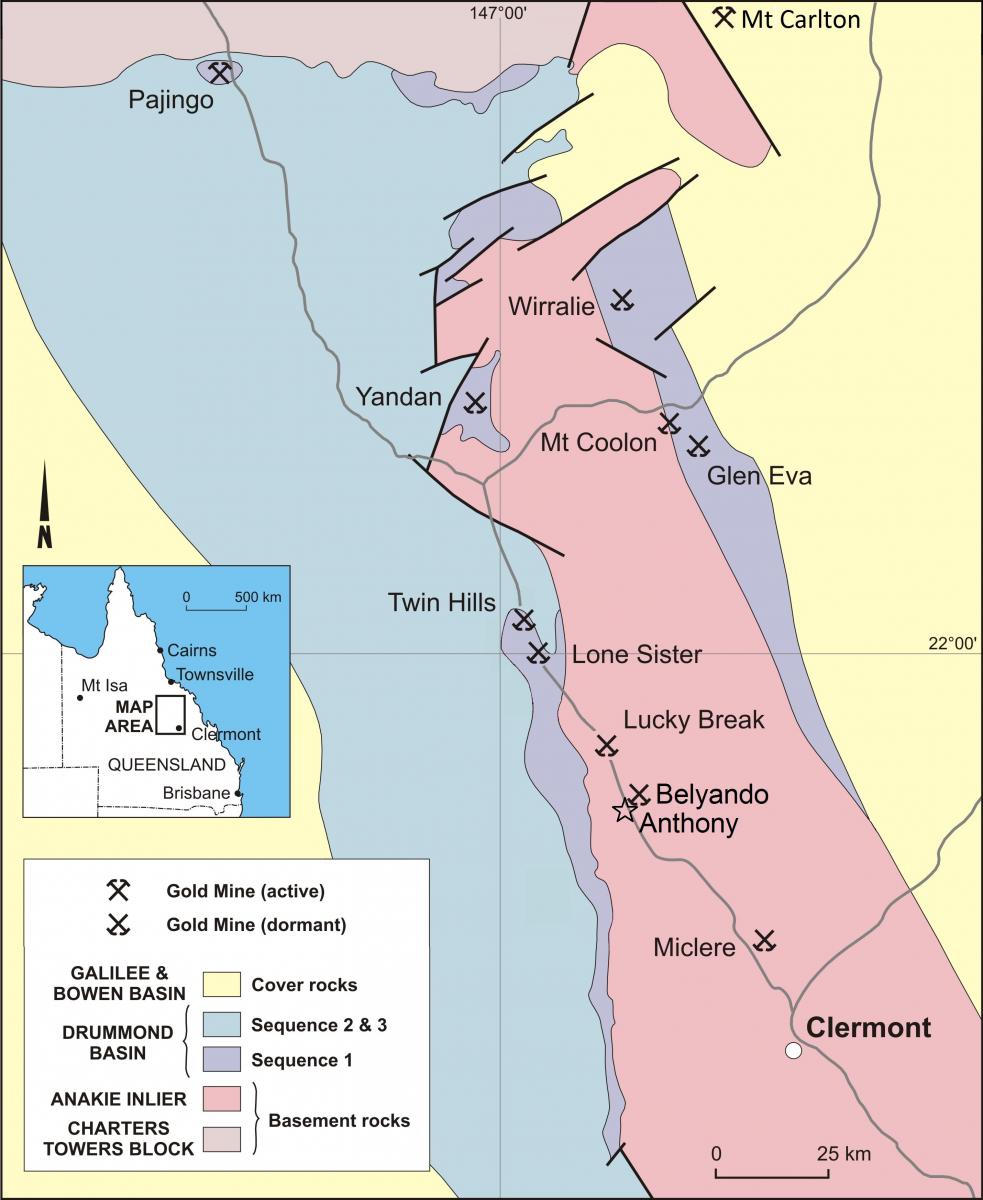





The main regional structural elements comprise the Neo-Proterozoic or Early Cambrian Anakie Inlier, a persistent structural high comprised primarily of the Cambrian Anakie Metamorphics, flanked by Devonian-Carboniferous rocks of the Drummond Basin. The Drummond Basin forms a large intracratonic basin that covers some 25,000 km2, extending from south of Charters Towers to Springsure in the south. It developed as a foreland basin to the west of a probable west dipping continental margin subduction zone.

Initial deposition within the Drummond Basin was associated with significant felsic to intermediate terrestrial volcanism, accompanied by emplacement of Late Devonian rhyolite plugs. Basin deposition terminated in the Middle Carboniferous during the Kanimblan Orogeny, a major east-west compressional event that affected much of eastern Australia. This deformation produced local folding of the Drummond Basin sequence, reactivated basin-forming faults and superimposed northwest trending strike-slip faults on the basin.
Known gold deposits in the region are generally related to high-level intrusives of Drummond age, emplaced into either the Silver Hills Volcanics or the underlying Anakie Metamorphics.